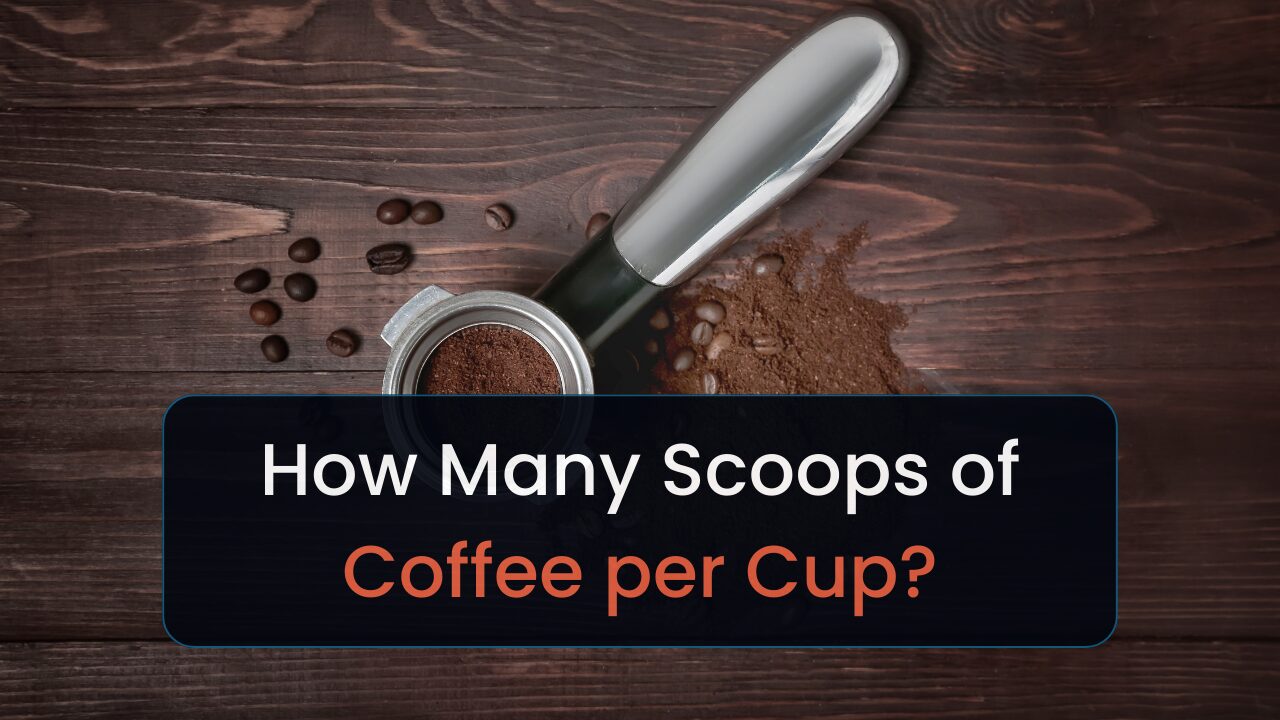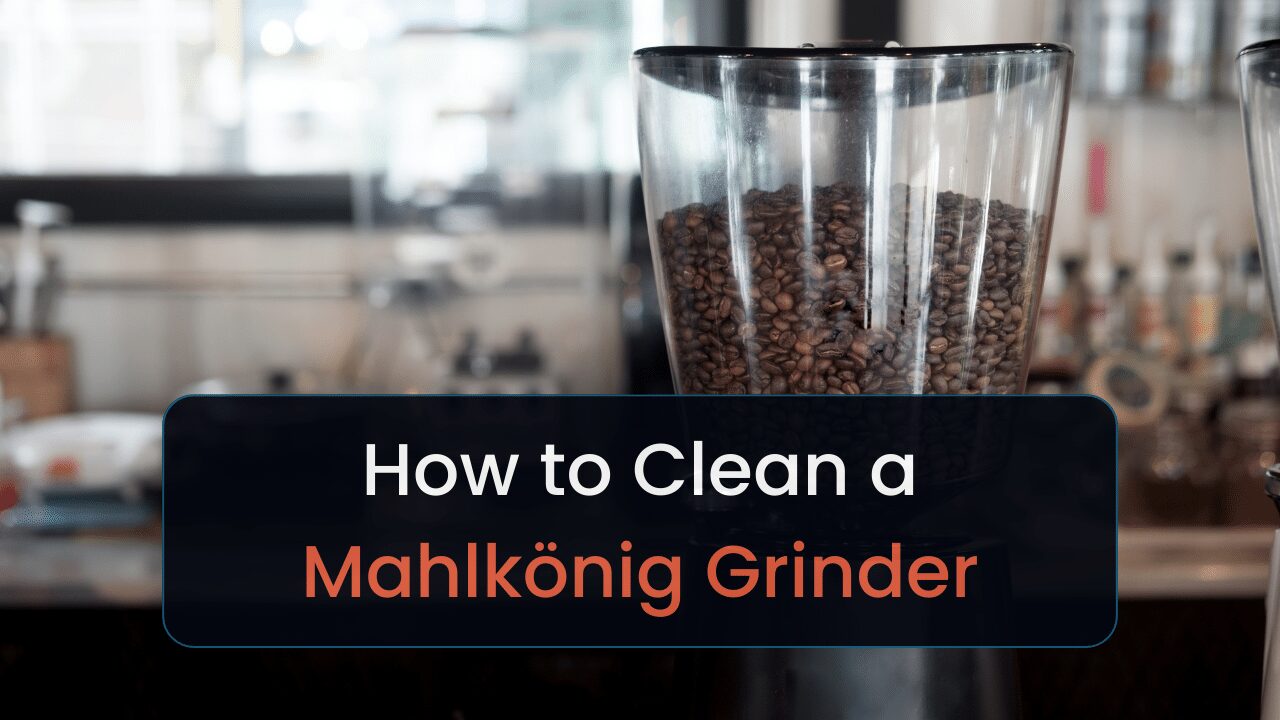I used to mistreat my coffee makers by not cleaning them properly. But I saw the light. I put together this guide to help you ensure your maker lasts longer and produces great-tasting coffee.
Here’s what you’ll find when reading:
Let’s get cleaning.
Key Takeaways
- For most makers, you’ll need warm water, mild dish soap, a sponge, and a towel
- Cleaning, on average, waves up to 20 minutes
- Machines (e.g., drip coffee makers) need descaling, which requires extra steps
- Clean your coffee maker daily or after each use
How to Clean Different Types of Coffee Makers:
Here’s a brief description of cleaning each coffee maker type:
| Coffee Maker | Time to Clean | Requires Descaling | Cleaning Frequency |
| French Press | 5–10 min | No | After each use |
| AeroPress | 5–10 min | No | After each use |
| Drip Coffee Maker | 10–20 min | Yes | Daily |
| Cold Brew Maker | 10–15 min | No | After each use |
| Percolator | 10–20 min | Yes | Monthly |
| Stovetop Coffee Maker | 5–10 min | Yes | After each use |
| Moka Pot | 5–10 min | Yes | After each use |
| Turkish Coffee Maker | 5–10 min | No | After each use |
| Pour Over Maker | 5–10 min | No | After each use |
| Vietnamese Phin | 5–10 min | No | After each use |
| Pod Coffee Maker | 10–20 min | Yes | Daily |
| Espresso Machine | 15–30 min | Yes | Monthly |
The table above provides an overview of various coffee makers, their cleaning times, descaling requirements, and cleaning frequencies.
None of the information on the table will tell you how to actually clean the machines. Follow each section to find what you’ll need, disassembly, cleaning agents and methods, and storage.
Whenever you see a cleaning method call for a towel, use one that’s lint-free and absorbent. Opting for these towels will prevent moisture and fibers from sticking to your coffee makers and getting in your drinks.
Regarding sponges and brushes:
Don’t use steel wool or scouring pads. Those will damage your coffee maker. When using a sponge, thoroughly rinse it after each use. Doing so prevents oil and soap residue from building up in your coffee maker.
And dish soap.
The best dish soap for cleaning coffee makers has a degreaser and is mild enough not to leave any residue or scent on the components. Avoid using dish soap with bleach, ammonia, or other harsh chemicals that could damage your coffee maker or affect the taste of your coffee.
Some examples of dish soap suitable for cleaning coffee makers are Palmolive Essential Clean Liquid Dish Soap or Dawn Ultra Dishwashing Liquid Dish Soap [1].
Rinse your coffee maker’s parts well with hot water after washing them with dish soap to remove any traces of soap.
1. How to Clean a French Press
- What you’ll need:
- Warm water
- Mild dish soap
- Sponge or soft brush
- Towel
- Time it’ll take to clean: 10 min
Refer to the text under the above table to understand what type of towel, soap, and sponge to opt for.
Disassembly & Cleaning Components
Remove the plunger and separate its components (plunger, filter screen, and lid).
Frequency of Cleaning
Clean after each use to prevent coffee residue buildup.
Cleaning Agents & Methods
Use warm water with a few drops of mild dish soap. Gently scrub the carafe, plunger, filter screen, and lid with a sponge or soft brush. Then rinse thoroughly with warm water.
Reassembly & Storage
After cleaning and rinsing all components, dry them with a towel. Reassemble the plunger, filter screen, and lid. Place the plunger back into the carafe and store it in a cool, dry place.
2. How to Clean an AeroPress
- What you’ll need:
- Warm water
- Mild dish soap
- Sponge or soft brush
- Towel
- Time it’ll take to clean: 5 min
French Press Disassembly
Separate the plunger, chamber, cap, filter holder, and rubber seal.
French Press Frequency of Cleaning
Clean after each use to maintain optimal flavor and prevent residue buildup.
French Press Cleaning Agents Required
Use warm water with a few drops of mild dish soap. Gently scrub the plunger, chamber, cap, filter holder, and rubber seal with a sponge or soft brush. Then rinse thoroughly with warm water.
French Press Reassembly & Storage
After cleaning and rinsing all components, dry them with a towel.
Reassemble the AeroPress by:
- Attaching the rubber seal to the plunger
- Inserting the plunger into the chamber
- Securing the cap with the filter holder.
Store in a cool, dry place.
3. How to Clean a Drip Coffee Maker
- What you’ll need:
- Warm water
- Mild dish soap
- Soft cloth or sponge
- White vinegar (or apple cider vinegar)
- Or you could use citric acid
- Towel
- Time it’ll take to clean:
- Regular clean: 15–20 minutes
- Deep clean: 30–45 minutes
Cleaning the Brew Basket & Carafe
Remove the brew basket and carafe. Wash them with warm soapy water using a soft cloth or sponge, then rinse thoroughly and dry them with a towel.
Drip Maker Frequency of Cleaning
Clean removable components after each use. Deep clean (descaling) once a month or as needed based on local water hardness.
Hardness measures how much calcium and magnesium are dissolved in water [2]. These minerals can affect the taste and extraction of coffee and cause scale buildup in coffee makers.
To tell water hardness, use a test kit that measures the concentration of calcium and magnesium in parts per million (ppm). The higher the ppm, the harder the water. Alternatively, you can look up the water hardness level of your area online or contact your local water supplier.
I’ll cover what descaling is and how to do it much later in the guide. For now, I’ll cover basic descaling.
Drip Coffee maker Descaling Process
Fill the water reservoir with equal parts water and white vinegar (or a descaling agent as recommended by the manufacturer). Run a brewing cycle. Then run 1–2 cycles with water only to flush out vinegar residue or descaling agent.
Cleaning & Maintaining Water Reservoir
Wipe the interior of the water reservoir with a damp cloth after each use. Ensuring no standing water is left. Check for and remove mineral deposits during the descaling process. Dry the reservoir thoroughly before subsequent use or storage.
Standing water does not flow or drain and remains in one place for a long time.
4. Cold Brew Maker
- What you’ll need:
- Warm water
- Mild dish soap
- Soft cloth or sponge
- Towel
- Time it’ll take to clean: 10–15 min
Cleaning the Brewing Cold Brew Chamber
Remove the brewing chamber and filter. Wash them with warm soapy water using a soft cloth or sponge, then rinse thoroughly and dry with a towel.
Frequency of Cleaning
Clean removable components after each use.
Cold Brew Cleaning Agents Required
Use warm water and mild dish soap to clean the components. Avoid using abrasive cleaners or brushes that might damage the filter or other parts.
Reassembly & Storage
Reassemble the cold brew coffee maker once all components are clean and dry. Store in a cool, dry place when not in use to keep it in good condition.
5. How to Clean a Percolator Coffee Maker
- What you’ll need:
- Warm water
- Mild dish soap
- Soft cloth or sponge
- Towel
- Descaling agent (e.g., white vinegar or commercial descaler).
- Time it’ll take to clean: 15–20 min
Percolator Disassembly
Disassemble the percolator, including the lid, brewing basket, and stem. Wash each part with warm soapy water using a soft cloth or sponge. Then rinse thoroughly and dry with a towel.
How Often You Should Clean a Percolator
Clean removable components after each use. Descale the percolator every 1–3 months. Depending on usage and water hardness.
Percolator Descaling Agents
Fill the water reservoir with a 1:1 mixture of white vinegar and water, or use a commercial descaler following the manufacturer’s instructions. Run a brewing cycle, then discard the solution. Rinse the percolator by running 1–2 cycles with clean water.
Reassembly & Storage
Reassemble the percolator once all components are clean and dry. Store in a cool, dry place when not in use to maintain its condition.
6. How to Clean a Stovetop Coffee Maker
- What you’ll need:
- Warm water
- Mild dish soap
- Soft cloth or sponge
- A towel
- A descaling agent (e.g., white vinegar or commercial descaler)
- Time it’ll take to clean: 10–15 min
Disassembly & Cleaning Components
Disassemble the stovetop coffee maker, including the top chamber, bottom chamber, and coffee filter. Wash each part with warm soapy water using a soft cloth or sponge, then rinse thoroughly and dry with a towel.
How Often You Should Clean a Stovetop Maker
Clean removable components after each use. Descale the stovetop coffee maker every 1–3 months, depending on usage and water hardness.
Cleaning Agents & Methods
Follow these steps to clean your stovetop maker:
- Use warm soapy water for regular cleaning.
- For descaling, fill the bottom chamber with a 1:1 mixture of white vinegar & water, or use a commercial descaler following the manufacturer’s instructions.
- Heat the mixture until it starts to steam.
- Turn off the heat & let it cool.
- Rinse thoroughly with clean water.
Reassembly & Storage
Reassemble the stovetop coffee maker once all components are clean and dry. Store in a cool, dry place when not in use to maintain its condition.
7. How to Clean a Moka Pot
- What you’ll need:
- Warm water
- Mild dish soap
- Soft cloth or sponge
- A towel
- A brush or pipe cleaner (for spout cleaning)
Time it’ll take to clean: 10–15 min
Disassembly & Cleaning Components
Disassemble the Moka pot into its three main components: the bottom chamber, the coffee filter, and the top chamber.
Clean each part with warm soapy water using a soft cloth or sponge, paying special attention to the spout, which may require a brush or pipe cleaner.
Frequency of Cleaning
Clean removable components after each use. Avoid aggressive cleaning, as Moka pots develop a layer of coffee oils that contribute to their unique taste.
Cleaning Agents & Methods
Use warm soapy water for regular cleaning. Avoid using abrasive or harsh cleaning agents, as they may damage the Moka pot’s finish or remove the layer of coffee oils.
Reassembly & Storage
Reassemble the Moka pot once all components are clean and dry. Ensure the safety valve is not clogged and the gasket is in good condition.
Store in a cool, dry place when not in use to maintain its condition.
8. How to Clean a Turkish Coffee Maker
- What you’ll need:
- Warm water
- Mild dish soap
- Soft cloth or sponge
- A towel
- A brush or pipe cleaner (if needed)
- Time it’ll take to clean: 5–10 min
Cleaning the Cezve & Accessories
Rinse the cezve with warm water to remove any leftover coffee grounds. Then, use a soft cloth or sponge to clean the cezve and any accessories (such as a coffee spoon or grinder) with warm soapy water.
Frequency of Cleaning
Clean the cezve and accessories after each use to ensure optimal taste and prevent buildup of coffee residue.
Cleaning Agents & Methods
Use warm soapy water for regular cleaning. Avoid using abrasive or harsh cleaning agents, as they may damage the cezve’s finish or alter the taste of the coffee.
Storage Tips
After cleaning, dry the cezve and accessories thoroughly with a towel to prevent rust or corrosion. Store in a cool, dry place when not in use to maintain its condition and prolong its lifespan.
9. How to Clean a Pour-over Coffee Maker
- What you’ll need:
- Warm water
- Mild dish soap
- Soft cloth or sponge
- A towel
- Soft brush
- Time it’ll take to clean: 5–10 min
Disassembly & Cleaning Components
Remove the filter and rinse under warm water. If using a reusable metal filter, use a soft brush to gently scrub any residue.
Frequency of Cleaning
- Daily: Rinse the filter & dripper after each use.
- Weekly: Deep clean the filter & dripper with mild dish soap.
Cleaning Agents & Methods
Use warm water and mild dish soap to clean the dripper and filter. Gently scrub with a soft cloth or sponge to avoid scratching the surface. Rinse thoroughly to remove any soap residue.
Reassembly & Storage
Allow the components to air dry completely before reassembling. Store the pour over coffee maker in a cool, dry place when not in use.
10. How to Clean a Vietnamese Coffee Maker (Phin)
- What you’ll need:
- Warm water
- Mild dish soap
- Soft cloth or sponge
- A towel
- Time it’ll take to clean: 5–10 min
Cleaning the Brewing Device & Filters
Disassemble the Vietnamese phin coffee maker by separating the filter chamber, filter press, and lid. Rinse each component with warm water to remove any leftover coffee grounds.
Frequency of Cleaning
Clean the Vietnamese phin coffee maker after each use to maintain optimal taste and prevent residue buildup.
Cleaning Agents & Methods
Use warm soapy water and a soft cloth or sponge to clean each component gently. Avoid using abrasive or harsh cleaning agents, as they may damage the coffee maker’s finish or alter the taste of the coffee.
Storage Tips
After cleaning, dry each component thoroughly with a towel. Reassemble the Vietnamese phin coffee maker and store it in a cool, dry place when not in use to maintain its condition and prolong its lifespan.
11. How to Clean a Pod Coffee Maker
- What you’ll need:
- Warm water
- Mild dish soap
- Soft cloth or sponge
- A towel
- Descaling solution or white vinegar
- Time it’ll take to clean: 20–30 min
Cleaning the Brew Head & Drip Tray
Remove the drip tray and wash it with warm soapy water. Wipe the brew head with a damp cloth or sponge to remove any coffee residue.
How Often You Should Clean a Pod Coffee Maker
Clean the pod coffee maker after every few uses to maintain optimal taste and performance. Descale the coffee maker every 3–6 months. Depending on the hardness of your water and frequency of use.
Descaling Process & Agents
Use a descaling solution or white vinegar to remove mineral buildup in the coffee maker. Follow the manufacturer’s instructions for the descaling process, which typically involves adding the solution or vinegar to the water reservoir and running a brewing cycle.
Cleaning & Maintaining Water Reservoir
Empty and rinse the water reservoir with warm water every few uses. Occasionally, wash it with mild soapy water, rinse thoroughly, and dry it before reassembling it. This process will help prevent mold and bacteria growth.
12. How to Clean a Espresso Machines
- What you’ll need:
- Warm water
- Mild dish soap
- Soft cloth or sponge
- A towel
- Descaling solution
- Cleaning brush
- Blind filter or backflush disk (for manual machines)
- Time it’ll take to clean: 20–30 min
Cleaning the Group Head & Portafilter
- Remove the portafilter & rinse it under warm water.
- For manual machines, use a blind filter or backflush disk to backflush the group head.
- Wipe the group head & portafilter with a soft cloth.
Cleaning the Steam Wand & Frothing Pitcher
Wipe the steam wand with a damp cloth after each use. Purge steam through the wand to clear any milk residue. Soak the frothing pitcher in warm, soapy water & clean with a soft cloth.
Frequency of Cleaning
- Daily: Wipe down & rinse components after each use.
- Weekly: Deep clean group head, portafilter, & steam wand.
- Monthly: Descale the machine.
Espresso Machine Descaling Process & Agents
Mix the descaling solution with water according to the manufacturer’s instructions. Run the solution through the machine to remove mineral buildup. Rinse the machine with fresh water to remove any descaling residue.
Espresso Maker Maintenance & Storage Tips
- Always turn off & unplug the machine before cleaning.
- For super-automatic machines, follow the manufacturer’s instructions for cleaning & maintenance.
- Store the machine in a cool, dry place when not in use.
What Is Descaling & Decalcifying?
Descaling and decalcifying refer to removing built-up mineral deposits from your coffee machine. These deposits, primarily consisting of calcium and magnesium, form due to the heating and cooling of water in your coffee maker.
Now, let’s clarify the differences between descaling and decalcifying:
- Descaling: It focuses on removing scale deposits formed by the evaporation of hard water.
- Decalcifying: This process targets the removal of calcium deposits specifically.
Despite the slight differences, many use both terms interchangeably. Descaling and decalcifying are essential for maintaining the performance and longevity of your coffee machine.
Failure to descale or decalcify may result in:
- Reduced water flow
- Inconsistent water temperature
- Unpleasant taste
- Decreased machine lifespan
To descale your coffee machine, you’ll need a descaling agent. There are several options available, including:
- Liquid descaler: A concentrated solution designed to break down mineral deposits.
- Descaling tablets: Easy-to-use tablets that dissolve in water to create a descaling solution.
How often should you descale your coffee machine?
The frequency depends on factors like water hardness and usage, but generally, do so every 1 to 3 months [3].
Ignoring descaling can cause:
- Inefficient machine operation
- Expensive repairs
- Shorter machine lifespan
And now let’s talk about how to descale and decalcify your machine.
How to Descale & Decalcify Your Coffee Maker
To get started, you’ll need a descaling agent.
Common options include:
- Descaling solution: Commercially available, specially formulated for coffee machines.
- Vinegar: An affordable, natural alternative for descaling, but it might leave an aftertaste.
- Citric acid: Another natural option; it’s effective & leaves no residual taste.
Here’s how to descale and decalcify your coffee maker:
- Prepare the descaling solution: Mix your chosen agent with water, following the manufacturer’s instructions or recommended proportions.
- Empty the coffee maker: Ensure there’s no coffee or water in the machine.
- Add the solution: Pour the prepared descaling solution into the water reservoir.
- Run the coffee maker: Start a brewing cycle, allowing the solution to flow through the machine.
- Pause & soak: If necessary, pause the brewing process halfway for about 30 minutes to let the solution work on stubborn deposits.
- Rinse thoroughly: Run at least two full cycles with plain water to remove any traces of the descaling agent.
Regardless of your coffee maker brand, such as Breville or DeLonghi, the descaling process is similar. Consult your machine’s manual for specific instructions and recommended descaling agents.
Regular descaling and decalcifying will keep your coffee maker performing optimally and producing delicious coffee.
FAQs
Read on to find frequently asked questions about cleaning your coffee makers.
Why Is It Important to Clean Coffee Makers Regularly?
Regular cleaning of coffee makers is crucial to ensure optimal performance and prolong their lifespan.
How Often Should I Clean My Coffee Maker?
Clean your coffee maker after every use for removable parts and at least once a month for a thorough cleaning and descaling.
Depending on the frequency of use and water hardness in your area.
What Are the Best Materials to Use for Cleaning Coffee Makers?
The best materials for cleaning coffee makers are soft, non-abrasive cloths, gentle dish soap, and descaling solutions like white vinegar or citric acid.
How Do I Clean a Drip Coffee Maker with Vinegar & Water?
To clean a drip coffee maker with vinegar and water, mix equal parts of white vinegar and water, then run the solution through a full brewing cycle.
After that, run two cycles with plain water to rinse out any remaining vinegar residue.
How Do I Clean a Pod Coffee Maker with Vinegar & Water?
To clean a pod coffee maker with vinegar and water, fill the water reservoir with a 1:1 mixture of white vinegar and water, then run a brewing cycle without a pod.
Afterward, run two more cycles with plain water to thoroughly rinse out any remaining vinegar.
How Do I Clean the Brew Basket, Hot Plate, or Drip Tray of My Coffee Maker?
To clean the brew basket, hot plate, or drip tray of your coffee maker, remove the components and wash them with warm, soapy water.
Rinse thoroughly and dry before reassembling the coffee maker.
How Do I Remove Mineral Buildup or Hard Water Stains from My Coffee Maker?
To remove mineral buildup or hard water stains from your coffee maker, use a descaling solution or a mixture of equal parts white vinegar and water.
Run the solution through a brewing cycle, followed by a few water-only cycles to rinse away residue.
How Do I Sanitize or Disinfect My Coffee Maker?
To sanitize or disinfect your coffee maker, run a brewing cycle with a water and white vinegar mixture, then rinse thoroughly with clean water cycles.
How Do I Prevent Mold & Bacteria Growth in My Coffee Maker?
Prevent mold and bacteria growth in your coffee maker by cleaning it regularly, drying components thoroughly, and storing it in a cool, dry place.
How do I Clean a Coffee Maker with Baking Soda?
Mix ⅓ cup baking soda with 1 cup of warm water inside your coffee maker’s reservoir.
Run your coffee maker once. Afterward, fill your reservoir and run your coffee maker a couple times with clean water in the reservoir.
Conclusion
No matter the machine type you’re cleaning, use a lint-free and absorbent towel, mild dish soap that has a detergent, and non-abrasive sponges. Whether you’ll need to descale will depend on the machine you get.
Are you curious about the coffee makers I listed? Check out all the different types of coffee makers and explore how they work.






